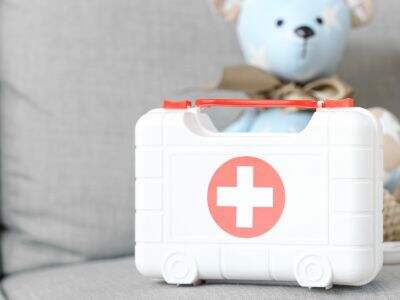トレイルを歩いたりキャンプしているときに、緊急事態に備えるのは本当に重要です。天気が突然変わりますし、道に迷う可能性もあります。私たちを自然の要素から守ってくれる装備の一つとして、 緊急用ブランケット があります。非常用毛布にはさまざまな種類があり、それらのタイプと使い方を理解することで、厳しい状況での生存が助けられます。
緊急ブランケットの種類
マイラー毛布
マイラー毛布は非常用毛布の最初のタイプです。マイラーは一種の光沢のあるプラスチックです。これらの毛布は軽量なので、バッグに入れて持ち運びやすくなっています。この 緊急処置キット 毛布は体熱の90%を反射することができ、涼しい天候でも暖かく保ってくれます。もしも困った状況に陥った場合、マイラー毛布を使って助けを呼ぶ信号としても使用できます。光沢のある表面は遠くからでも救助者があなたを見つけるのに役立ちます。
ウールブランケット
ウールブランケットは、別の種類の非常用ブランケットです。そして、ウールブランケットはミラーブランケットよりも重く、厚手ですが、あなたを暖かく保つためには同じくらい効果的です。ウールの非常に良い特徴は、雨が降ったりハイキング中に濡れたりした場合でも、湿った状態でも熱を保持することです。ウールブランケットがあなたを暖かく保つもう一つの理由は、非常に耐久性があり、何度も使用できるため、屋外活動に最適だということです。
非常用ブランケットの使い方
非常用ブランケットは自分を暖かく保つためだけではなく、多くの異なる状況で安全を確保するのに役立ちます。雨が降り始めたり日差しが強かったりすると、 ボックス型非常キット ブランケットのようなものをシェルターとして利用できます。木の枝やポールにブランケットを吊るすだけで、雨や日差しから身を守る即席のシェルターが完成します。
非常用毛布は、必要に応じて助けを呼ぶためにも使用できます。光沢のあるマイラー素材は非常に反射性が高いため、遠くからでも人々が見つけやすくなります。また、緊急時のシェルターとしても使用でき、ブランケットを空中で振り回すことで、救助チームがあなたを見つけるのがずっと早くなります。
適切なブランケットの選び方
バッグに入れる非常用ブランケットを選ぶ際には、どこでハイキングするかを考慮してください。冬に寒い山でハイキングをする場合、4シーズン対応のキャンプ用シェルターのようにマイラーブランケットが大活躍します。しかし、夏や暖かい気候でのハイキングの場合、快適さを重視してウールブランケットが適しているかもしれません。
また、ブランケットのサイズと重量も考慮すべきです。長距離ハイキングを計画している場合、コンパクトで軽量なブランケットを選ぶべきです。これにより、バックパック内のスペースをあまり占有せず、歩いている間も重く感じません。
非常用ブランケットの重要性
睡眠の象徴の一つにエマージェンシーブランケットがあります。例えば、森で迷子になった状況を考えてみてください。その場合、救助を待つ間にエマージェンシーブランケットのおかげで暖かい状態を保つことができます。また、体が極端に冷えてしまうことで発生する可能性のある命に危険を及ぼす低体温症を防ぐのにも役立ちます。寒さの中での保温は非常に重要であり、エマージェンシーブランケットはまさに救世主となるでしょう。
負傷した人を助けるためにもエマージェンシーブランケットを使うことができます。友人が切り傷や出血している場合、ブランケットを使って傷に圧力をかけることができます。これにより出血を止める助けになります。また、ブランケットの光る面を使用して、その表面から反射する光で助けを必要とするハイカーを見つけ出すこともできます。それは救助者のシルエットを示す手助けとなります。
複数のブランケットの喜び
サプライの中にこれらの緊急用毛布をいくつか持っていると非常に役立ちます。例えば、ハイキングやキャンプ中に直面するかもしれないあらゆる天候に備えて、マイラー毛布とウール毛布の両方を用意すると、選択肢を広げることができます。このようにして、状況に応じて適切な毛布を選べるようになります。
友達やグループでハイキングをする場合、余分な緊急用毛布を持っていくのは素晴らしいアイデアです。気温が下がった場合、毛布を共有して暖かく快適に過ごすことができます。どんなことが起こっても準備しておくのがベストです。
最後に、サプライの中に緊急用毛布があることで安心感を得られます。緊急時に備えているという意識は、ハイキングやキャンプをより楽しいものにし、ストレスなく過ごせる助けになります。問題を考えるのではなく、自然を楽しみながらリラックスできます。
だから、屋外サバイバルキットにエマージェンシーブランケットが含まれていることを絶対に確認してください。ブランケットの種類、その使い方、そして自分に合ったものを選ぶ方法を理解することで、緊急時に備えることができます。これらのブランケットは命を救う可能性があることに注意し、必要なときに最も適した種類を選ぶことでさらに多くの利点を得られるでしょう。
 EN
EN
 FR
FR
 DE
DE
 IT
IT
 JA
JA
 KO
KO
 RU
RU
 ES
ES
 AR
AR
 BG
BG
 HR
HR
 DA
DA
 NL
NL
 FI
FI
 EL
EL
 NO
NO
 PL
PL
 PT
PT
 RO
RO
 SV
SV
 TL
TL
 ID
ID
 SR
SR
 UK
UK
 VI
VI
 SQ
SQ
 TH
TH
 TR
TR
 AF
AF
 MS
MS
 CY
CY
 IS
IS
 HY
HY
 AZ
AZ
 KA
KA
 MN
MN
 MY
MY
 KK
KK
 UZ
UZ
 CS
CS



